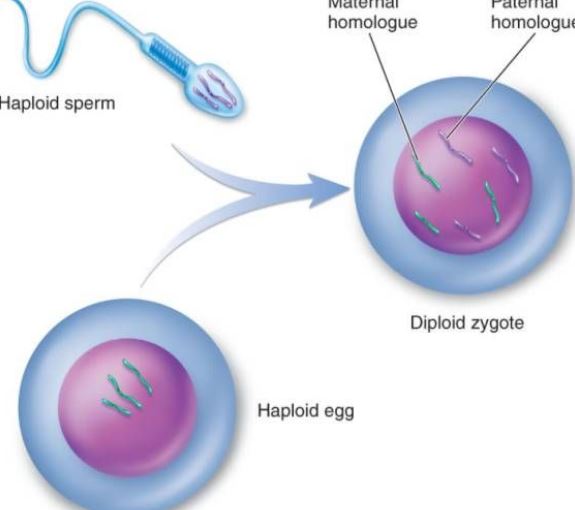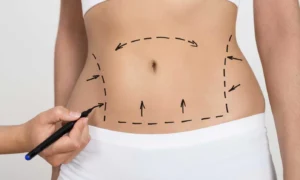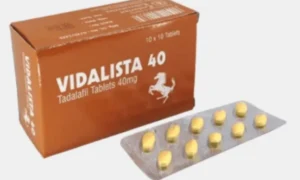Gametes and fertilization overview

Sexual reproduction refers to the sexual germ cells (gametes) produced by the parents, through the combination of bisexual germ cells (such as sperm and egg cells), become the fertilized egg, and then the fertilized egg develops into a new individual, called sexuality reproduction. Extensive variation in gene combinations in sexual reproduction can increase the ability of offspring to adapt to natural selection. Randomly combined genes in offspring of sexual reproduction may or may not be beneficial to the species, but at least increase the chances of a few individuals surviving in an unpredictable and ever-changing environment, thereby benefiting the species. Sexual reproduction can also promote the spread of favorable mutations in the population. If two individuals in a species have favorable mutations at different sites, in the asexual reproduction population, the two mutants will compete until one elimination, it is impossible to retain both favorable mutations at the same time. However, in sexual reproduction populations, through mating and recombination, these two favorable mutations can simultaneously enter the genome of the same individual and simultaneously spread in the population. For the above reasons, sexual reproduction accelerates the process of evolution. In the more than 3 billion years of biological evolution on Earth, the first two billion years of life have remained in the asexual reproduction stage, and the evolution has been slow, and the evolution rate has accelerated significantly since the last 1 billion years. In addition to changes in the earth’s environment (such as the emergence of the oxygen-containing atmosphere, etc.), the occurrence and development of sexual reproduction is also a major cause.
Gametes
Gametes definition: Gametes refer to mature cells produced by the reproductive system when the organism is sexually reproducing, referred to as germ cells. Gametes are divided into male gametes and female gametes. The female gametes of animals and plants are usually called egg cells, and the male gametes are called sperm. Sperm is quite small, but it can move and enter the egg cell in a scorpion shape. The egg cell is quite large and non-swimming. For example, the egg cell volume of sea urchin is 10,000 times than that of sperm cells. Although the male and female gametes are different in volume, the nuclear DNA they provide for the offspring is equal, that is, each provides a set of genomes. However, due to the large size of the egg cells, the cytoplasmic structure and cytoplasmic DNA of the daughter cells are basically provided by the egg cells. Gametes play an important role in biological calculations. Through genetic maps, the flow of genes and the pattern of progeny genotypes can be clearly observed. The number of gametes in the first generation of hybrids and the relative traits in hybrids is 2nth power (n is the logarithm of relative traits). When a living body forms a gamete, the paired genetic factors are separated from each other and enter different gametes. Gametes contain only one of each pair of genetic factors. When fertilized, the combination of male and female gametes is random. Due to the genus of gametes formed by meiosis, the diversity of chromosome composition, the difference in genetic material of different gametes, and the randomness of the combination of egg cells and sperm in the process of fertilization, the offspring of the same parent must be diverse.
Fertilization
Fertilization is the process by which eggs and sperm fuse together into one zygote. It is a basic feature of sexual reproduction and is ubiquitous in the animal and plant world, but it is often referred to as the most commonly referred to the animal. Animal fertilization at the cellular level, the fertilization process includes three major stages: egg activation, regulation, and amphoteric pronuclear fusion. Activation can be regarded as the starting point of ontogeny, mainly manifested by changes in oozing membrane permeability, ecclesia of cortical granules, the formation of the fertilized membrane, etc. Adjustment occurs after activation, which is the first step in ensuring the normal division of fertilized eggs. The change of the prokaryotic nucleus ensures the inheritance of the parents and restores the diploid. The fertilization not only initiates the replication of the DNA but also activates the genetic information such as mRNA and rRNA in the egg to synthesize the protein required for embryo development. After 6 to 7 days after fertilization, the blastocyst zona pellucida disappears and gradually buries and is covered by the endometrium, which is called implantation of the fertilized egg. The sperm of an animal does not have obvious chemotaxis like the sperm of lower plants such as bryophytes but rather reaches the vicinity of the egg by active movement or by the ciliary movement of the genital epithelial cells. Sperm capacitation: It is known that when many mammalian sperms pass through the female reproductive tract or through the cumulus, the foreign protein that encapsulates the sperm is removed, and the physical and biological properties of the sperm plasma membrane change, allowing the sperm to gain energy and participate in the fertilization process. When the mammalian capacitated sperm contacts the egg membrane or zona pellucida of the egg, it specifically binds to a glycoprotein on the egg membrane, which stimulates the sperm to produce energy. The acrosome reaction helps the sperm to further cross the egg membrane. On the sea urchin egg, the acrosome reaction of the sperm is a certain polysaccharide substance in the peri-membrane film. Most of the eggs have egg membranes on the periphery, and the thickness of various egg membranes varies. The main component is mucin or mucopolysaccharide; only a few are naked eggs, such as the eggs of a coelenterate. Acrosome reaction: When the sperm passes through the egg membrane, there is a process of bonding. The former is loosely attached, free from external temperature interference, and has no specificity. During the adhesion period, the protoplast protein on the acrosomal membrane is transformed into acrosome protein, and the acrosome protein accelerates the sperm to cross the egg membrane; It is a strong combination, can be interfered by low temperature, and has a specificity. A protein that binds specifically to the egg glycoprotein has been isolated on the plasma membrane of the sea urchin sperm, called a binding protein, with a molecular weight of about 30,000. The secondary oocytes in the middle of the second maturation division during ovulation, together with the surrounding zona pellucida and the radiation crown, rapidly enter the fallopian tube ampulla through the abdominal cavity due to the swing of the cilia of the fallopian tube epithelial cells and the contraction of the muscular layer. If the egg cell fails to meet the sperm, it usually begins to degenerate within 12-24 hours. Once the sperm is in contact with the egg, the egg itself undergoes a series of activation changes. On mammalian eggs, it is characterized by the cortical reaction, ovarian membrane reaction and zona pellucida reaction, which can block the multi-fertilization and stimulate the further development of eggs. The cortical reaction occurs at the time of sperm cell fusion. From the point of fusion, the cortical particles rupture and the contents are effluxed, thereby spreading the cortex of the entire egg. The ovarian membrane reaction is a recombination process of the ovum and cortical granule envelope. The zona pellucida reaction is a process in which the cortical efflux and the zona pellucida from a fertilized membrane, the egg membrane is separated from the plasma membrane, the sperm receptor in the zona pellucida disappears, and the zona pellucida hardens. Only sperm that has an acrosome reaction can fuse with the egg. Under the action of acrosin, the sperm passes through the radial crown and interacts with the sperm receptor glycoprotein molecule ZP3 on the zona pellucida, allowing the sperm to release the acrosomal enzyme and enter the perivitelline through the zona pellucida. At the beginning of fertilization, the envelope of the equatorial part of the human sperm head is in contact with the egg cell membrane, and then the nucleus and cytoplasm of the sperm enter the egg. After the sperm enters the egg, the cortical particles in the shallow cytoplasm of the egg immediately release its contents to the periphery of the membrane. At the same time, as the membrane of the cortical granules fuses with the egg cells, the negative surface charge on the cell surface increases, thereby suppressing the fusion of the sperm plasma membrane with the egg membrane, which is called a cortical reaction. The zona pellucida structure changes called the zona pellucida reaction. At this time, the ability of the zona pellucida to bind sperm is reduced, preventing the occurrence of polyspermy and ensuring the biological characteristics of human monospermy. In addition to destroying or inactivating the receptor bound to the sperm in the zona pellucida, the contents of the cortical granules can also increase the cross-linking between the peptide chains in the zona pellucida, weaken the sensitivity to the acrosome protease, and prevent sperm penetration. Although there are several sperms passing through the zona pellucida, only one sperm enters the egg cell to fertilize it. In an abnormal situation, there are two sperms involved in fertilization, namely double sperm fertilization. Two sperms simultaneously enter the egg to form embryos of triploid cells, all of which are aborted or die soon after birth. After the sperm enters the egg, the egg quickly completes the second mature division. At this time, the nuclei of the sperm and the egg are called the male pronucleus and the female pronucleus, respectively. The two pronuclei gradually approach, the nuclear membrane disappears, and the chromosomes fuse to form a diploid fertilized egg. When the sperm cells are fused, the microvilli on the surface of the egg can be seen to surround the sperm, which may be oriented; then the ovarian membrane fuses with the plasma membrane in the posterior region of the sperm acrosome.
Reference
- Yanagimachi R. Germ cells and fertilization: why I studied these topics and what I learned along the path of my study. Andrology. 2014, 2(6):787-93.
- Henshaw J M, Marshall D J, Jennions M D, et al. Local gamete competition explains sex allocation and fertilization strategies in the sea. American Naturalist. 2014, 184(2):32.
- Mori T, Igawa T. Gamete attachment process revealed in flowering plant fertilization. Plant Signaling & Behavior. 2014, 9(12):977715.
- Hédouin L, Pilon R, Puisay A. Hyposalinity stress compromises the fertilization of gametes more than the survival of coral larvae. Marine Environmental Research. 2015, 104:1-9.
Luo J, Mcginnis L K, Carlton C, et al. PTK2b function during fertilization of the mouse oocyte. Biochem Biophys Res Commun. 2014, 450(3):1212-1217.














